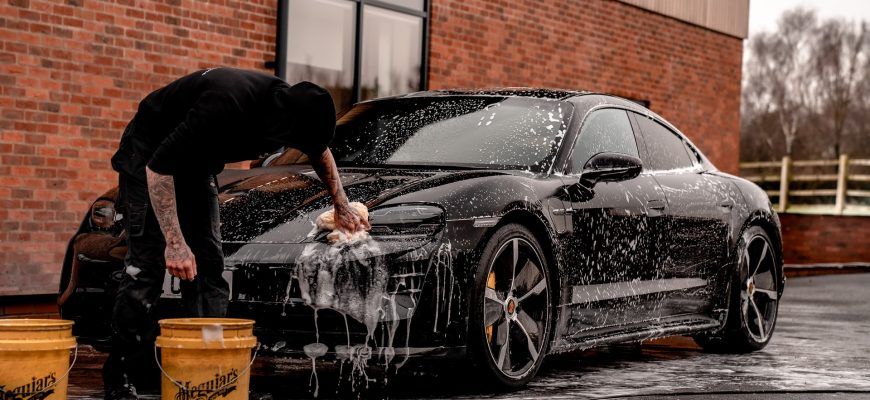DIY Car Care Tips: Maintaining Your Vehicle Post-Repair

After your car has been repaired, whether it was a minor scratch or major bodywork, the journey to maintain its pristine condition is just beginning. For Australian car owners, the harsh sun, coastal salt air, and rugged roads can pose unique challenges to keeping your vehicle in top shape. This article delves into essential DIY car care tips that will help you preserve the finish of your repaired vehicle, ensuring it remains as good as new for years to come.
Understanding the Basics of Car Maintenance Post-Repair
Maintaining a vehicle post-repair is crucial not just for aesthetic reasons but also to safeguard your investment. Repairs, especially those related to the car’s body and paintwork, require special attention to prevent future damage and to maintain the vehicle’s value. Unlike regular maintenance, post-repair care focuses on protecting the repair work and ensuring the vehicle’s finish remains unaffected by environmental factors and daily use.
Essential DIY Car Care Tips
Regular Cleaning and Washing
The first step in maintaining your vehicle’s post-repair condition is regular cleaning. Dirt, dust, bird droppings, and tree sap can cause damage over time, eating away at the new paint if not removed promptly. For Australian car owners, it’s advisable to wash your car every two weeks using a pH-neutral car wash shampoo. Websites like CarsGuide recommend avoiding harsh chemicals and opting for microfiber cloths and mitts to prevent scratching the surface.
Waxing and Polishing
Applying a quality car wax or sealant every three to six months can provide a protective layer over the paint, shielding it from UV rays and pollutants. Polishing, on the other hand, should be done sparingly, ideally once a year, to maintain the shine without wearing down the paint. Choice.com.au lists several top-rated products that are suitable for the Australian climate, ensuring long-lasting protection and gloss.
Checking and Maintaining Fluid Levels
Fluids are the lifeblood of your vehicle. Ensuring engine oil, coolant, brake fluid, and transmission fluid are at optimal levels and in good condition is essential. Use the manufacturer’s recommended fluids and check them monthly. This not only keeps your car running smoothly but also prevents corrosion and wear that can compromise your vehicle’s post-repair state.
Tyre Maintenance
Tyres directly impact your vehicle’s performance and safety. Regular checks for pressure and tread wear are vital. Adhere to the recommended tyre pressure for your vehicle, as incorrect pressure can lead to uneven wear and reduce the lifespan of your tyres. The Australian Automobile Association (AAA) provides guidelines on tyre maintenance that are worth consulting.
Protecting Your Car from the Elements
Australia’s weather can be harsh on vehicles. Protect your car from the sun by parking in the shade or using a car cover, especially if the paint is newly applied. If you live near the coast, the salt in the air can accelerate corrosion; regular washing can help mitigate this risk. The RAA and NRMA offer tips on protecting your vehicle from environmental damage.
Advanced Maintenance Tips
Scratch and Dent Prevention
Even with careful driving, scratches and dents can occur. Using touch-up paint for small scratches and considering paint protection films can offer an additional layer of defense. For DIY solutions, Australian automotive experts recommend products that match your car’s exact paint code to ensure a seamless repair.
Interior Care and Preservation
The interior of your car deserves as much attention as the exterior. Use UV-protectant sprays for dashboards and panels, and condition leather seats regularly to prevent cracking. Fabric protectors can keep upholstery looking new. Australian brands offer a range of products designed for the local market, ensuring your car’s interior remains in excellent condition.
Regular Inspections and Professional Servicing
Despite the best DIY care, regular professional inspections are crucial. Mechanics can spot potential issues before they become major problems, saving you time and money in the long run.
Maintaining your vehicle post-repair requires dedication and the right approach, especially in Australia’s unique environment. By following these DIY car care tips, you can preserve the finish of your repaired car, ensuring it stays in excellent condition for years to come. Remember, the effort you put into maintaining your vehicle not only protects your investment but also ensures it remains a pleasure to drive.
Other Sources
– CarsGuide. [https://www.carsguide.com.au/]
– Drive. [https://www.drive.com.au/]
– Australian Automobile Association (AAA). [https://www.aaa.asn.au/]
– Royal Automobile Association (RAA). [https://www.raa.com.au/]
– National Roads and Motorists’ Association (NRMA). [https://www.mynrma.com.au/]

